Yoga For Stress Relief (5 Everyday Yoga Poses With Steps)
Jump To:
Stress is basically the muscular uneasiness that turns into chronic (been there long-term) pain and aches. Practicing various yoga asanas really helps you relieve stress and stay calm. Here are 5 daily yoga for stress release poses for you. Sometimes, the bad posture of the body will also have an impact on stress. You also need to focus on the importance of good posture and practice posture correction techniques.
Asanas help ease physical discomfort caused by anxiety. There are many ways in which exercise benefits panic disorder, including a reduction in pain and stress. Yoga not only helps in easing the physical body, but it can also help with eliminating anxious thoughts.
We have to learn how to reduce stress by following healthy lifestyle tips and workout our bodies with pranayama and yoga. Here is yoga for stress and anxiety relief for different parts of the body. Not a body-bending person? Pranayama for stress also works best. Pranayama Sometimes too much stress may lead to headaches and migraines, check out yoga for migraine to get rid of headaches.
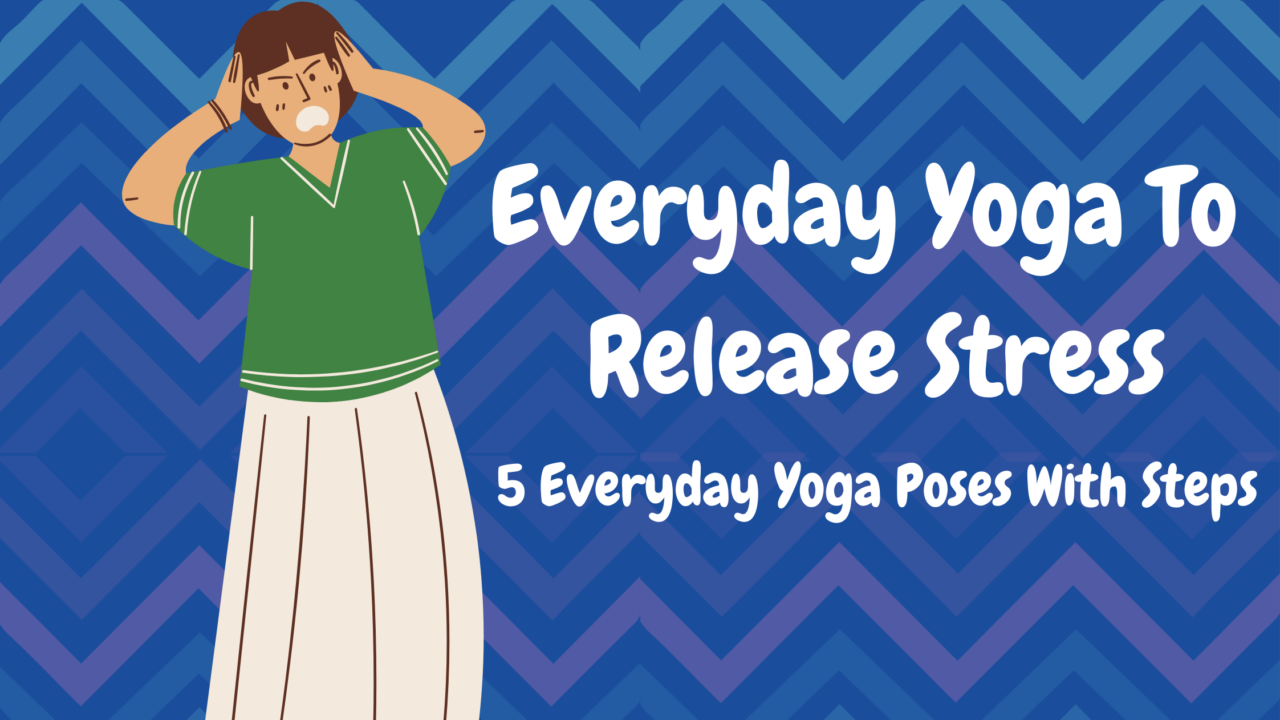
Stress is possibly the biggest issue we face today and unfortunately, we’re doing nothing about it. Even if your training and nutrition are spot on, stress can undo all the good work and screw your health by creating hormonal imbalances which lead to fat storage, sleep deprivation, or low immunity, which create more imbalances, and so on and so forth.
Yoga For Stress Relief:
The end of a long day is sometimes signaled by minor aches and pains in the body, ranging from headaches to stiff backs. The process of winding down for bed should include a few postures that will detoxify the body and release stiffness from your muscles and joints.
A relaxed body ensures deep and restful sleep. This goes hand in hand with the reason we should not go to sleep immediately after a meal – the body allocates sleep time to the rejuvenation of the organ systems and not to active digestion. The sooner we take charge of how well we sleep, the more illnesses we prevent in the future.
Stress Effects of Stress – How stress affects the body
- Raises blood pressure and pulse rate
- Makes breathing faster, and often shallower
- Tenses muscles (may even lead to muscular spasms)
- Impairs the digestive and immune systems
- Causes fatigue, skin irritations, headaches, excessive sweating, and nightmares, among other symptoms
- Impacts sleep, may cause insomnia
How stress affects the mind and behavior:
- Fosters worrying, indecision, negativity, restlessness
- Muddles thinking impairs judgement
- Triggers irritability, anger, depression, apathy, alienation, forgetfulness
- Alters appetite (eating more/less)
- Loss of sex drive
- Can make one more accident-prone
- Increased smoking, drinking
5 Everyday Yoga Poses With Steps
Check out these 5 yoga poses to reduce stress and anxiety in your life. It is best to perform yoga on an empty stomach or at least 3 hours from eating.
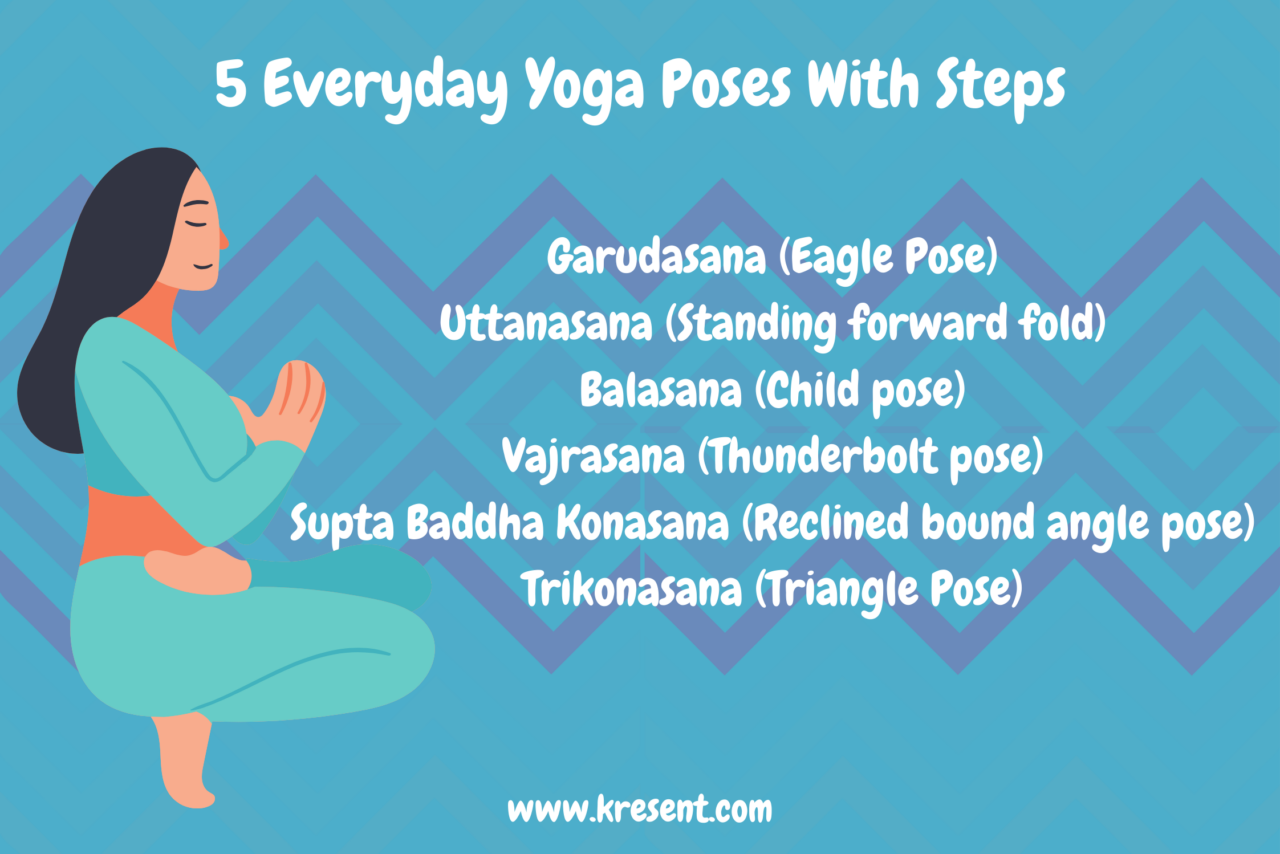
1. Garudasana (Eagle Pose):
Makes your ability to focus on a single point better which is a very good yoga for stress management and relaxation.
It relaxes shoulders and hips, which accumulate emotional tension.

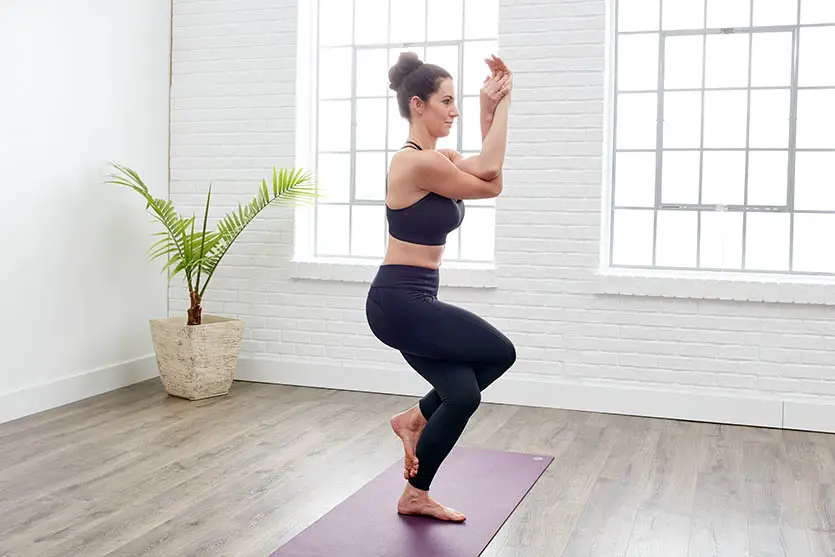
Garudasana Steps:
- Start with tadasana(mountain pose- stand straight with legs shoulder wide and arms falling freely on the sides).
- Take one of your legs around the other as shown in the picture. You have to balance your body with one leg.
- Make your arms twisted with palms facing each other as shown in the picture.
- Focus on a point at a distance.
- While releasing, open the arms slowly first then turn the overlapped leg out.
- Practice this asana 2-3 times on each side.
Precaution:
If there is an injury in the knee, ankle, or shoulder and pregnant women should not attempt this pose.
2. Uttanasana (Standing forward fold):
Practicing uttanasana quiets a busy mind, and balances the nervous system spreading calm and peace.
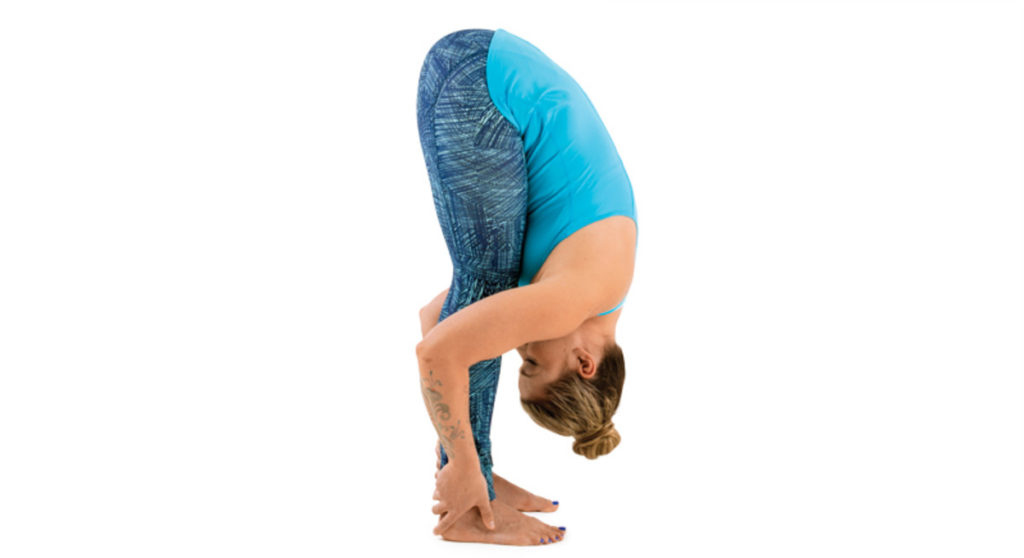
Uttanasana Steps:
- Start with Mountain Pose relaxing, exhale, and bend the upper body forward from the hips, not the waist.
- Without straining the body continue to bend stretching your hips till your hands touch your feet.
- Place the palms by the side of your feet as much as possible and touch your forehead to your knees.
- Take deep and slow breaths and relax your body.
Precautions:
People with any spine injury, pain in ankles or hip joints, knee problems, sciatica, heart problems, severe back pain, or an abdominal hernia should avoid this pose.
3. Shashankasana / Balasana (Child pose) To Calm The System And Reduce Stress:
Releases the pressure from adrenal glands. Sharanagat Mudra / Shashankasana / Balasana is a simple and non-invasive posture that relaxes the back and restores blood supply to a tired brain.
The posture is best practiced at the end of the day to release stiffness in the muscles that support the spine and hips.
The pressure of the legs against the abdomen massages the internal organs and boosts digestion. Increased blood flow to the head relieves a headache and burning sensation in the eyes.
he pressure of the legs against the abdomen massages the internal organs and boosts digestion. Increased blood flow to the head relieves a headache and burning sensation in the eyes.

Shashankasana Steps:
- Start with Vajrasana with the eyes closed and relax the whole body.
- Inhale raising the arms straight and shoulder width wide above the head, and exhale slowly bending forward from the pelvic region.
- Rest the hands, forehead, and elbows, and retain the position as long as you’re comfortable.
- Release with exhalation and slowly lift the forehead, and arms to the vertical position, lowering the arms and resting the palms on the thighs.
- Do it 3 times increasing the duration gradually to 5 minutes.
Precautions:
People suffering from vertigo, high blood pressure, knee problems, or slipped discs and pregnant women should avoid doing balasana.
4. Vajrasana (Thunderbolt pose) Yoga Pose For Stress:
This pose calms the mind and body very effectively and is also good for the digestive system.
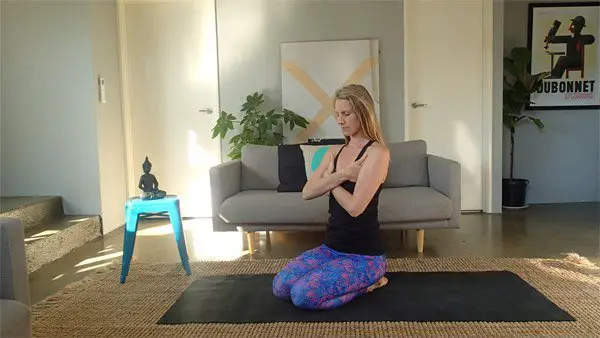
Vajrasana Steps:
- Kneel with the knees closer and big toes touching each other.
- Place your buttocks in the space between both of your heels separated but big toes touching.
- The spine and head should be straight and relaxed.
- Breathe normally closing your eyes and relaxing the whole body.
Precautions:
If there is an injury in the knee, ankle or shoulder should not attempt this pose.
5. Supta Baddha Konasana (Reclined bound angle pose):
This pose opens up the hips, inner thighs, and groin and releases tension and stress in there.

Supta Baddha Konasana Steps:
- Start with Dandasana, with your legs extended in front of you, and bend your knees with soles touching each other towards your pelvis.
- Lean backward with support on elbows to the floor.
- Gently adjust your buttocks and spine along the floor maintaining the natural curve of the lower back.
- Let your arms relax with your palms facing up.
- Release the pose drawing your knees together and roll to your right side and rise with your hands pressing yourself to the seated position.
Precautions:
If you have a groin, knee, lower back, shoulder, or hip injury and pregnant women should avoid this pose.
6. Trikonasana (Triangle Pose):
The Trikonasana, or triangle pose, stimulates the function of the entire body and gives a lateral (side) stretch to the spine. It helps reduce blood pressure, stress, and anxiety.
Practice this asana every day and you’ll gain strength in the ankles, thighs, knees, hips, calves, and hamstrings. All standing poses build the cardiovascular system, so the more you do it, the better your stamina.
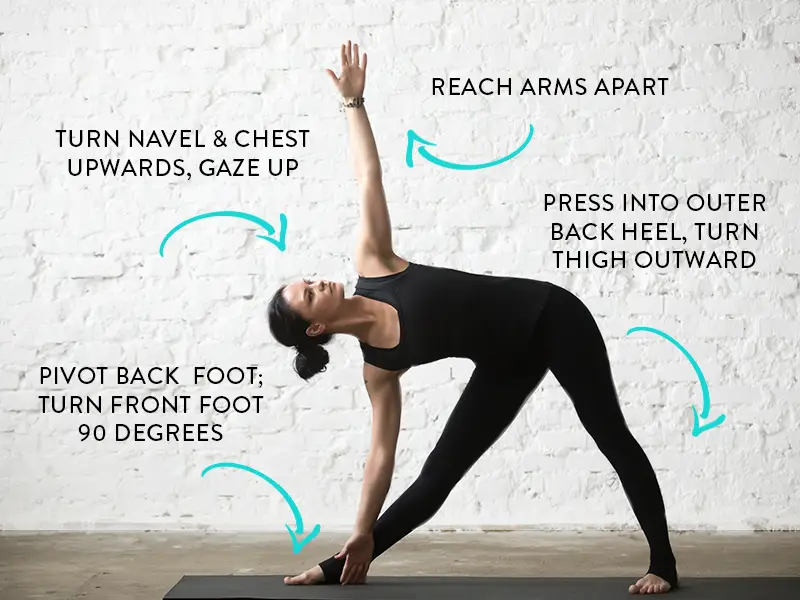
Trikonasana Steps:
- Stand with your feet three to four feet apart, arms by your side. (If you’ve never done it before, use the wall for support.)
- Open the right foot to 90 degrees and turn the left foot slightly in, towards the right.
- Inhale; raise both your arms out to the side, palms facing down.
- Exhale; extend the torso towards the right, bending from the hip joint, not the waist.
- Start the movement by strengthening the left leg and grounding the heel firmly to the floor. If you’re new to this, feel free to bend the knee ever so slightly. Rotate the torso to the right, keep both sides equally long, and ground the right leg.
- Rest the right hand on your shin, ankle, or the floor outside the right foot. Using a yoga block to place the hand helps here. Stretch the left arm towards the ceiling, making sure that both shoulders are in line. Keep your head in line with the spine gazing towards the right big toe.
- As you get used to this, aim to look at the ceiling. Hold this position, and breathe deeply for five breaths or for 30 seconds.
- Inhale to lift up, pressing right foot firmly on the floor. Repeat the same on the left side. You can do this on both sides, three or four times.
The aim is never to overdo it but to engage regularly so that you get stronger and more stable over time.
The next time you find yourself stressing out, snap out of it and try to talk some sense into yourself. While stressors and stressful situations are unavoidable, reacting to those stressors is a choice we make. And trust me when I say all we need to do is to choose not to react negatively during such situations.
How can I reduce stress naturally?
How can we handle stress in healthy ways?
- Eat and drink to optimize your health.
- Exercise regularly.
- Stop using tobacco and nicotine products.
- Study and practice relaxation techniques.
- Reduce triggers of stress.
- Examine your values and live by them.
- Assert yourself.
- Set realistic goals and expectations.
Almost any form of exercise or movement can increase your fitness level while decreasing your stress. The most important thing is to pick an activity that you enjoy. Examples include walking, stair climbing, jogging, dancing, bicycling, yoga, tai chi, gardening, weightlifting, and swimming.
Can yoga Cure overthinking?
Yoga not only helps in easing the physical body, but it can also help with anxious thoughts. Negative thinking patterns and frequent worries are common for those diagnosed with panic disorder. Meditation, visualization, and focusing on breathing can help with letting go of worry and fear.
Also these Eight Yoga Poses to Help Relax Your Mind at Home
- Wide-Legged Forward Bend Pose (Prasarita Padottanasana)
- Lizard Pose (Utthan Pristhasana)
- Sphinx Pose (Salamba Bhujangasana)
- Supported Bridge Pose (Setu Bandhasana Sarvangasana)
- Forward Fold Pose (Uttanasana)
- Reclining Bound Angle Pose (Supta Baddha Konasana)
Is yoga good for anxiety and depression?
Yoga as monotherapy or adjunctive therapy shows positive effects, particularly for depression. As adjunctive therapy, it facilitates the treatment of anxiety disorders, particularly panic disorders. Tai chi and qi gong may be helpful as adjunctive therapies for depression, but the effects are inconsistent.
A systematic review and subsequent randomized controlled trials show consistent positive effects of yoga on anxiety disorders compared with placebo in flawed, small studies. Tai chi, qigong, and meditation have not shown effectiveness as alternative treatments for depression or anxiety.
7 Easy Yoga Poses for Depression and Anxiety that may work
- Easy Pose (Sukhasana)
- Downward Facing Dog Pose (Adho Mukha Svanasana)
- Upward-Facing Dog Pose (Ūrdhva Mukha Svānāsana)
- Shoulderstand (Salamba Sarvangasana)
- Standing Forward Fold Pose (Uttanasana)
- Child’s Pose (Balasana)
- Corpse Pose (Savasana)
Take Away:
The incorporation of meditation and breathing can help improve a person’s mental well-being. Regular yoga practice creates mental clarity and calmness; increases body awareness; relieves chronic stress patterns; relaxes the mind; centers attention; and sharpens concentration.
If you’re stressed about what you are doing, you’ve got two options to make your choice:
- Quit doing what stresses you, if that is not what you actually want to do.
- And if what you’re doing means the most to you, make your body and mind such that it goes through the situation (that causes stress) effortlessly by practicing the above-mentioned everyday yoga for stress, and pranayama for stress relief regularly.
Hatha yoga, in particular, may be a good choice for stress management. Hatha is one of the most common styles of yoga, and beginners may like its slower pace and easier movements.
